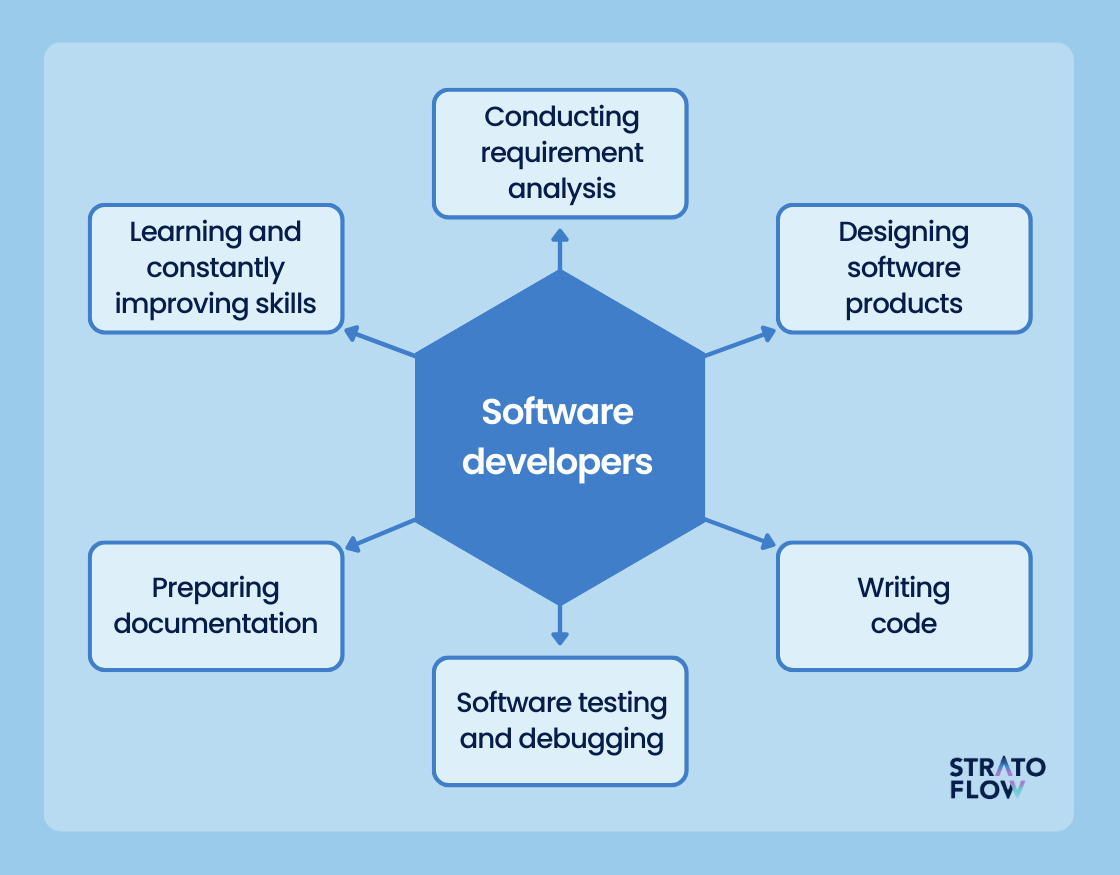Hire Dedicated Developers to Accelerate Your Software Development Timeline
Hire Dedicated Developers to Accelerate Your Software Development Timeline
Blog Article
Devoted Developers vs. In-House Teams: Which Is Right for You?
The decision between making use of committed programmers and keeping an in-house team is a substantial one that can influence the trajectory of your projects and overall organization technique. On the other hand, internal groups contribute to a natural business culture and a nuanced understanding of long-term goals.
Understanding Dedicated Programmers
The expanding demand for specialized skills in the technology sector has led to the development of committed developers as a viable service for lots of organizations. These experts are normally contracted on a job basis, enabling firms to take advantage of specific know-how without the lasting commitment related to full time hires. Committed developers are typically ingrained within a client's team, giving flexibility and scalability to meet task demands.
This version permits companies to access a global ability pool, which is specifically useful in a rapidly progressing technological landscape. Devoted designers can be sourced from numerous geographical places, making certain that companies can locate the ideal ability set at competitive prices. They usually bring a wealth of experience and knowledge, having dealt with diverse projects throughout various sectors.
Moreover, devoted programmers can focus exclusively on the tasks handy, boosting productivity and efficiency. They are geared up to integrate effortlessly into existing operations, working together very closely with internal groups to accomplish project goals. This technique not only reduces the burden of employment and training however additionally allows companies to stay dexterous, adapting promptly to altering market demands and technological improvements.
Benefits of In-House Teams

Additionally, in-house teams tend to have a much deeper understanding of the company's objective, worths, and objectives. This alignment can boost worker interaction and inspiration, as group members really feel more attached to their work and the company's success. Additionally, having a specialized in-house group allows for much better positioning of techniques and purposes, as these members are regularly concentrated on the business's priorities.
Internal groups additionally assist in quicker decision-making processes, as they can react much more quickly to modifications and obstacles. The established partnerships and experience with firm procedures enable for streamlined process and minimized miscommunication. Ultimately, the mix of a cohesive society, alignment with organizational goals, and effective interaction makes in-house groups a valuable property for lots of companies, especially those looking to grow long-lasting growth and innovation.
Price Considerations
When assessing cost considerations, both dedicated designers and in-house groups existing distinct financial implications for organizations. Involving dedicated programmers typically includes a pay-per-project or per hour price design, which can be cost-efficient for organizations with fluctuating job needs. This strategy permits for versatility in scaling resources up or down, making sure that firms just spend for the solutions they require.
In contrast, in-house teams entail taken care of costs, consisting of incomes, benefits, and overhead expenditures such as office and devices. While this version supplies greater control and instant availability of sources, it may bring about higher long-term expenditures, especially if the workload does not justify a permanent staff.
Furthermore, firms need to think about the concealed expenses related to employment and training of internal staff members, which can additionally strain spending plans. In some instances, the time and resources spent on taking care of an internal group can diminish the organization's core company goals.

Task Administration and Versatility
Project monitoring and flexibility are important variables that influence the option in between dedicated developers and internal groups. Devoted programmers generally use a high level of flexibility, enabling organizations to scale resources up or down based on project needs. This agility can be specifically beneficial for companies experiencing fluctuating workloads or those looking for to innovate rapidly. Dedicated groups usually have actually developed processes for managing tasks properly, leveraging specific methods like Agile or Scrum, which help with repetitive development and link adaptability.

Ultimately, the option in between specialized designers and in-house groups rests on the wanted level of flexibility and the details project management requirements. Firms need to examine their operational dynamics, task complexity, and source accessibility to identify which alternative lines up best with their critical goals.
Making the Right Choice
Choosing the ideal development technique-- in-house groups or additional reading committed programmers-- requires a careful analysis of various variables that straighten with a firm's strategic goals. On the other hand, internal groups can provide much better connection and assimilation with existing workers.
Following, evaluate your budget. Devoted programmers often present an economical remedy for temporary tasks, while internal teams might incur higher long-term expenditures as a result of wages, advantages, and expenses prices. Analyze the degree of control and cooperation wanted; in-house teams generally foster more powerful interaction and placement with business culture.
If immediate results are essential, devoted programmers can be onboarded rapidly, whereas constructing an in-house group takes time for recruitment and training. If continuous advancement is essential, investing in an internal team might yield much better returns over time.
Final Thought
In final thought, the decision in between in-house groups and committed designers hinges on project demands and organizational goals. Alternatively, internal groups cultivate a cohesive culture and much deeper positioning with long-lasting goals.
The decision between using dedicated developers and maintaining an internal team is a significant one that can influence the trajectory of your projects and general business technique.Task management and versatility are crucial elements that influence the choice in between specialized developers and internal groups. hire dedicated developers.In comparison, in-house groups may stand out in keeping a consistent task monitoring structure due to their experience with the organization's continue reading this culture and long-lasting goals. Devoted developers commonly provide an economical solution for short-term jobs, while in-house teams might incur greater lasting expenditures due to incomes, advantages, and expenses costs.In conclusion, the choice between dedicated designers and in-house teams pivots on task requirements and business objectives
Report this page